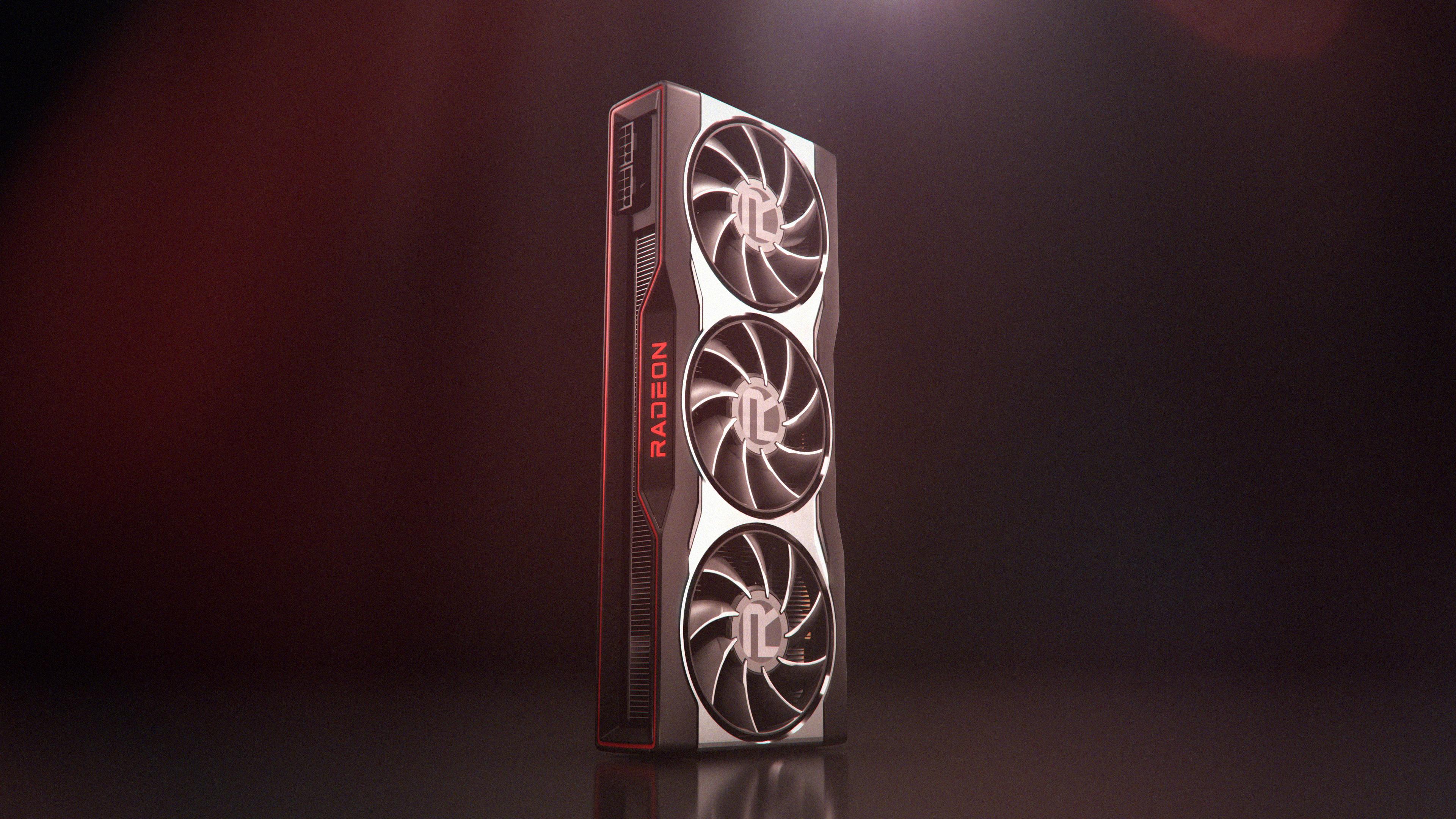-
chevron_right
Les AMD Radeon 6000 sont officielles : voici ce qu’elles ont dans le ventre
Jerome Durel · news.movim.eu / JournalDuGeek · Wednesday, 28 October, 2020 - 16:52 · 2 minutes
Après les nouveaux CPU Ryzen 5000 , AMD a annoncé ce mercredi 28 octobre ses nouveaux GPU Radeon 6000 pour le biais d’une conférence de presse en ligne. Avec cette nouvelle gamme de processeurs graphiques, AMD compte bien reprendre l’avantage sur Nvidia comme elle l’a fait sur Intel avec ces processeurs.
L’ADN RDNA 2
La grande nouveauté de ces GPU « BigNavi » est d’être basés sur l’ RNDA 2. Gravées en 7 nm, les puces sont capables de délivrer des performances par Watt en hausse de 54% par rapport la l’architecture RDNA première du nom. En pratique, AMD revendique des performances doublées en moyenne sur une sélection de jeux PC.
De la même manière que les CPU, ces GPU exploitent désormais un cache unifié baptisée « infinity cache » améliorant sensiblement la bande-passante. Cette dernière est doublée « en pratique » selon AMD par rapport à un bus 386 Gb/s classique.
Sans surprise, les cartes prennent en charge le Ray Tracing mais AMD a surtout tenu également à mentionner ses efforts pour réduire la latence. Une nouvelle technologie anti-lag, couplée à FreeSync permet de réduire la latence de 37% sur un Fortnite en 4K.
La série Radeon 6000 en bref
- Radeon RX 6800 XT
72 unités de calcul, 2015 MHz (2250 en boost), 128 Mo de cache, 16 Go de GDDR5. Le tout pour 300W. Elle pensée pour le jeu en 4K à 60 fps, et passe les 144 Hz en 1440p de nombreux jeux gourmands.
Elle sera disponible 18 novembre pour 649 dollars.
- Radeon RX 6800
60 unités de calcul, 1815 MHz (2105 en boost), 128 Mo de cache, 16 de GDDR5 pour 250W. Cette carte est présentée comme l’entrée dans la 4K. Comprendre qu’elle est capable d’atteindre 60 ips dans cette définition, mais sera moins à l’aise.
Elle sera disponible le 18 novembre pour 579 dollars.
- Elles sont chapeautées par la RX 6900 XT
80 unités de calcul, 2015 MHz ( 2250 en boost), 128 Mo de cache, 16 Go de GDDR5. Le tout 300W (aussi !). Cette carte est présentée comme « l’expérience du jeux en 4K ultime » dans un format identique à celle de la 6800 XT. Une pique non dissimulée à Nvidia et son encombrante RTX 3090. Elle est capable de délivrer 150 images par seconde en 4K ultra sur Doom Eternal.
Elle sera disponible le 8 décembre pour 999 dollars.
Le Replay
Les AMD Radeon 6000 sont officielles : voici ce qu’elles ont dans le ventre
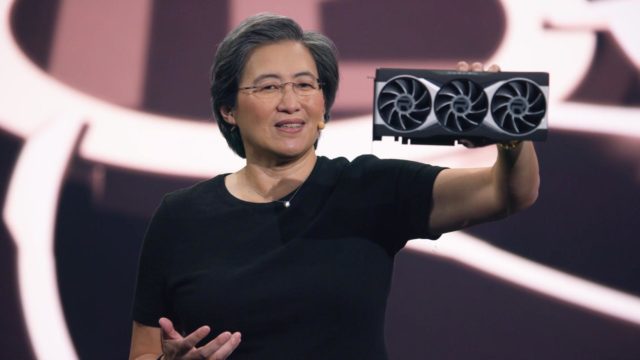
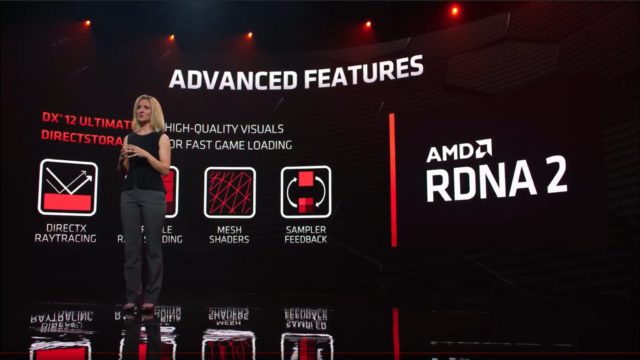
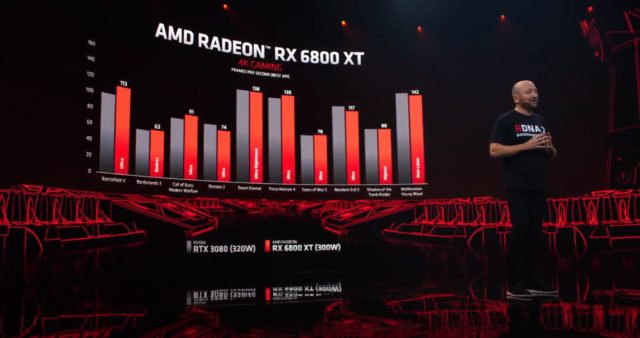
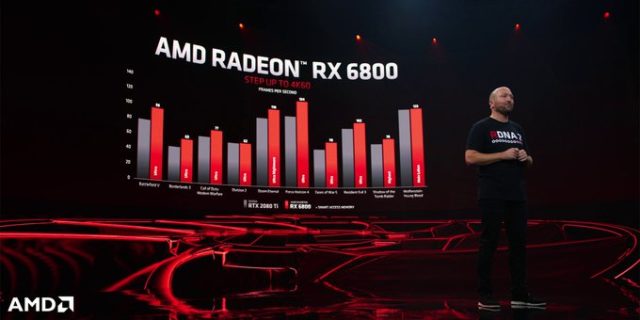
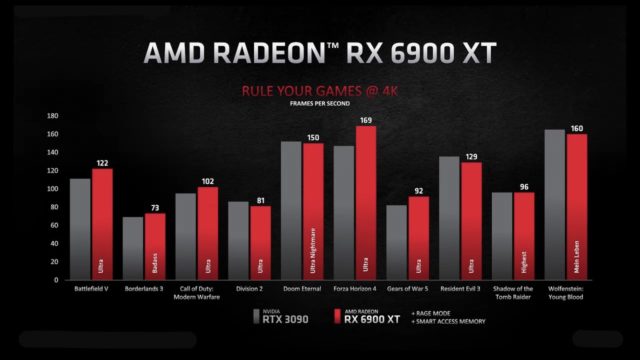

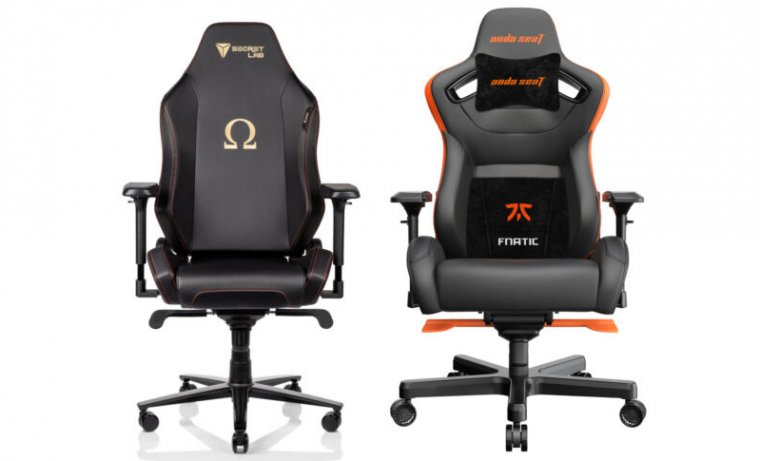
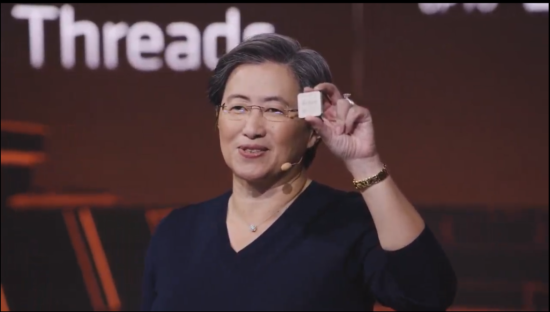

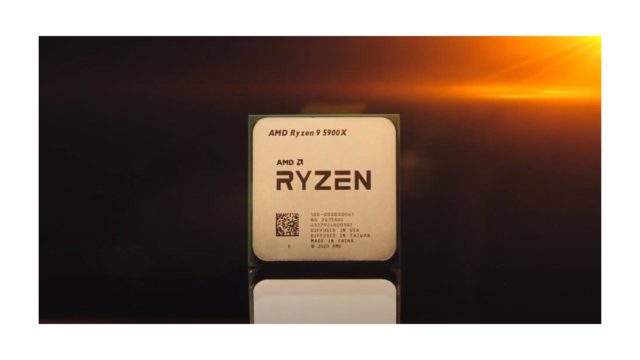
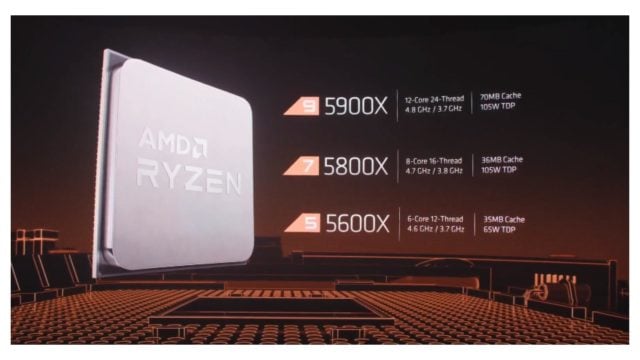
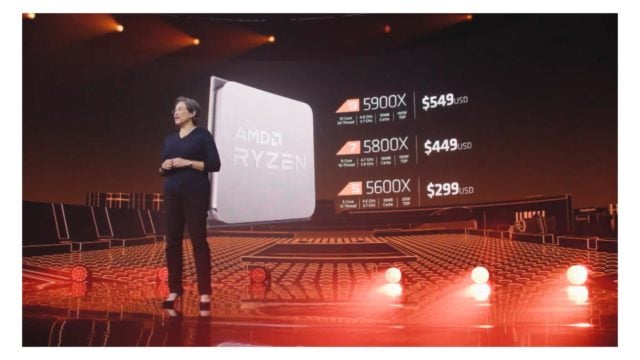

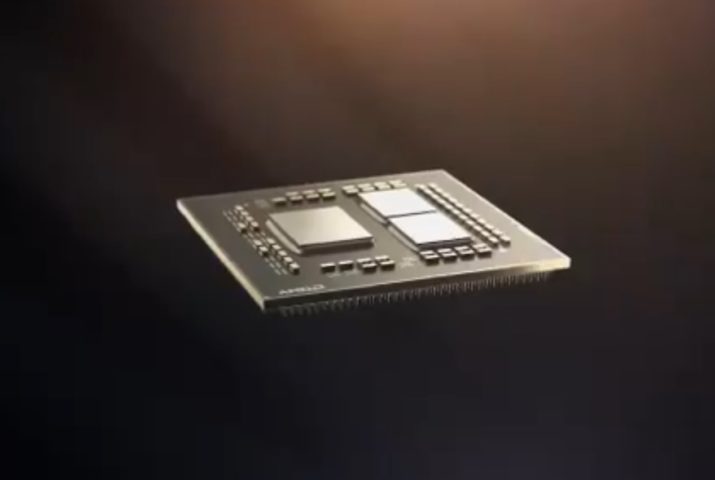 Crédits : AMD.
Crédits : AMD.
